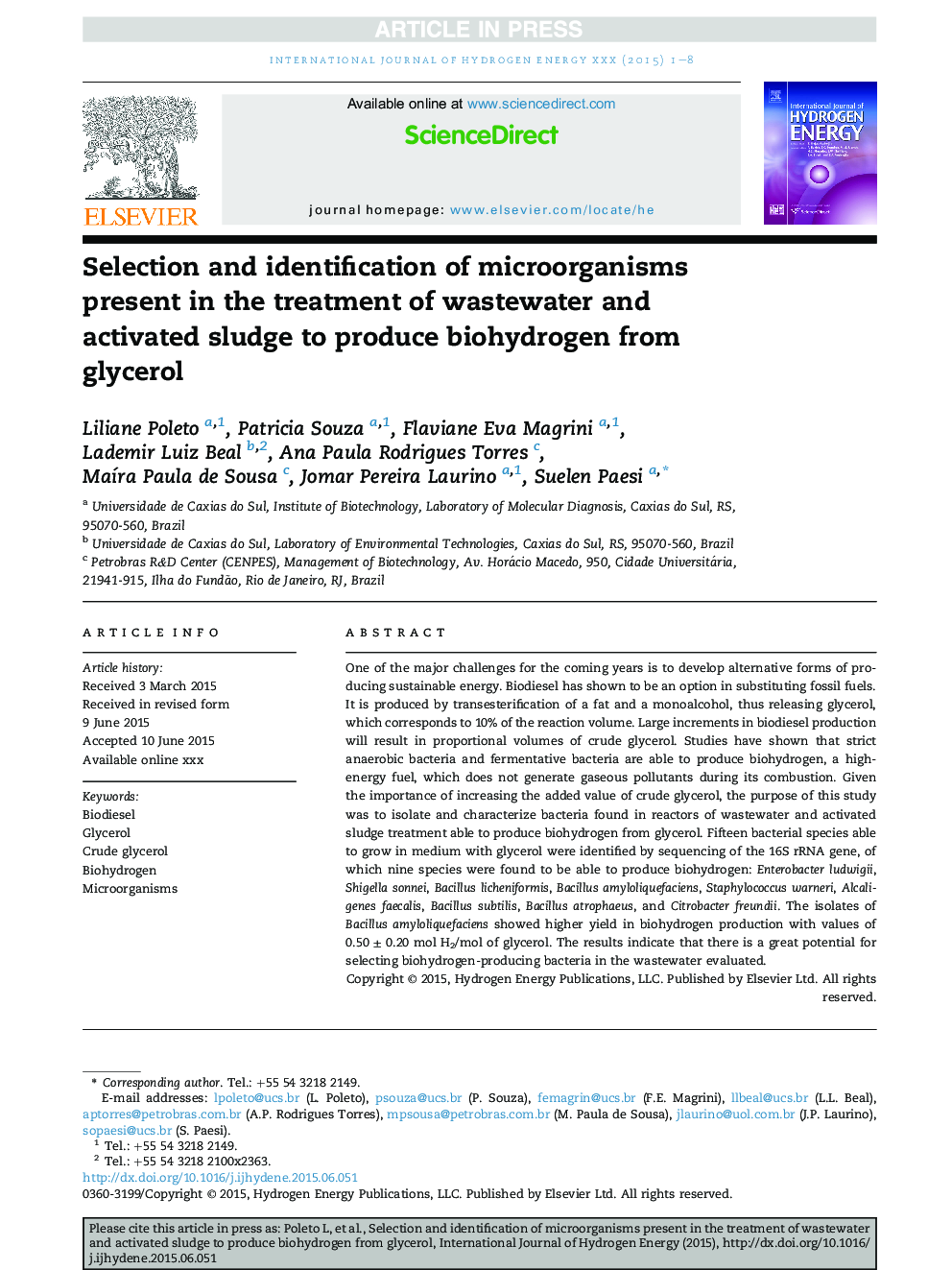| Article ID | Journal | Published Year | Pages | File Type |
|---|---|---|---|---|
| 7711484 | International Journal of Hydrogen Energy | 2016 | 8 Pages |
Abstract
One of the major challenges for the coming years is to develop alternative forms of producing sustainable energy. Biodiesel has shown to be an option in substituting fossil fuels. It is produced by transesterification of a fat and a monoalcohol, thus releasing glycerol, which corresponds to 10% of the reaction volume. Large increments in biodiesel production will result in proportional volumes of crude glycerol. Studies have shown that strict anaerobic bacteria and fermentative bacteria are able to produce biohydrogen, a high-energy fuel, which does not generate gaseous pollutants during its combustion. Given the importance of increasing the added value of crude glycerol, the purpose of this study was to isolate and characterize bacteria found in reactors of wastewater and activated sludge treatment able to produce biohydrogen from glycerol. Fifteen bacterial species able to grow in medium with glycerol were identified by sequencing of the 16S rRNA gene, of which nine species were found to be able to produce biohydrogen: Enterobacter ludwigii, Shigella sonnei, Bacillus licheniformis, Bacillus amyloliquefaciens, Staphylococcus warneri, Alcaligenes faecalis, Bacillus subtilis, Bacillus atrophaeus, and Citrobacter freundii. The isolates of Bacillus amyloliquefaciens showed higher yield in biohydrogen production with values of 0.50 ± 0.20 mol H2/mol of glycerol. The results indicate that there is a great potential for selecting biohydrogen-producing bacteria in the wastewater evaluated.
Related Topics
Physical Sciences and Engineering
Chemistry
Electrochemistry
Authors
Liliane Poleto, Patricia Souza, Flaviane Eva Magrini, Lademir Luiz Beal, Ana Paula Rodrigues Torres, MaÃra Paula de Sousa, Jomar Pereira Laurino, Suelen Paesi,
